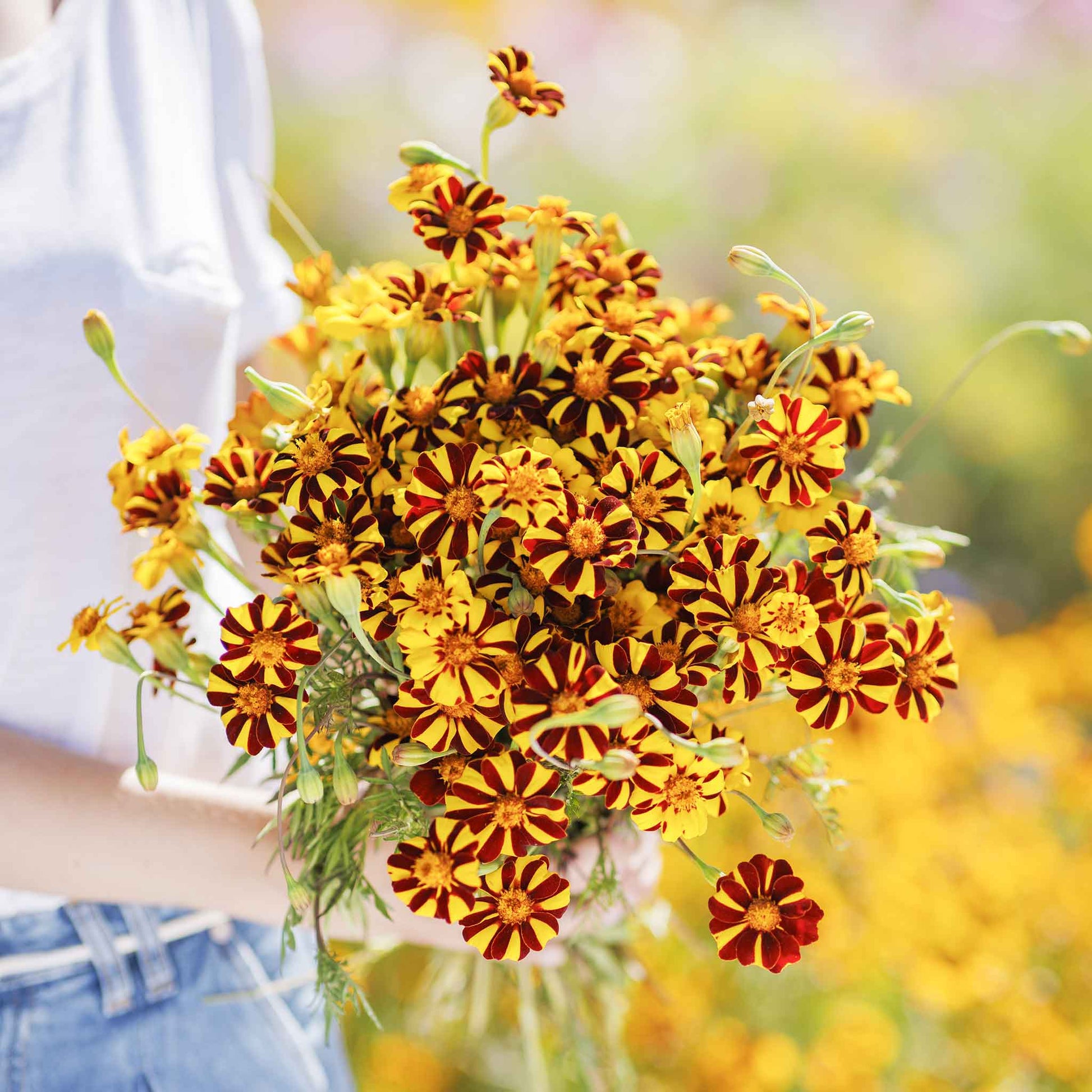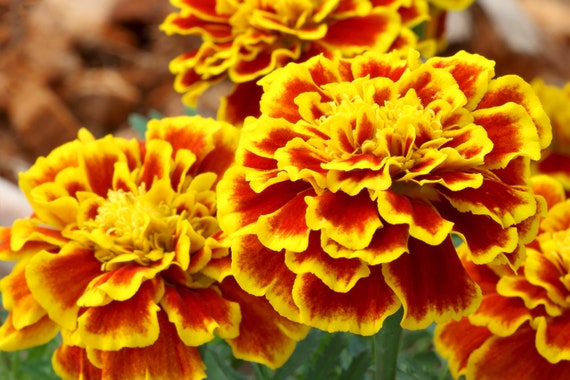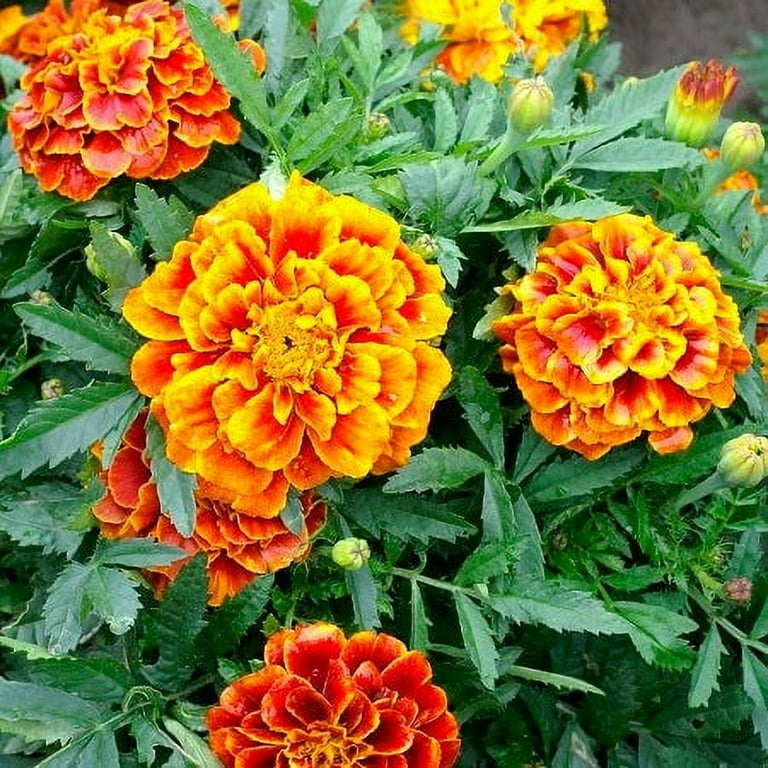How to Plant Marigold Seeds A Comprehensive Guide
Marigolds are a popular and versatile flower that can add a burst of color to any garden. They come in a variety of colors, sizes, and shapes, making them a favorite among gardeners. One of the best ways to grow marigolds is by planting their seeds. In this comprehensive guide, we will discuss everything you need to know about planting marigold seeds, including where to find them, how to germinate them, when to plant them, and their culinary uses. So let's get started!
Where to Find Marigold Seeds

Marigold seeds can be found in various places, including local nurseries, garden centers, and online stores. You can also collect the seeds from mature marigold flowers in your own garden. However, if you want a specific variety or color, it is best to purchase the seeds from a reputable source.
Here are some popular brands and varieties of marigold seeds:
African Marigold (Tagetes erecta)
African marigolds are the largest variety of marigolds, with large, showy blooms in shades of yellow, orange, and red. They can grow up to 3 feet tall and are perfect for adding height to your garden beds.
French Marigold (Tagetes patula)
French marigolds are smaller in size compared to African marigolds, but they make up for it with their vibrant colors and long blooming period. They come in shades of yellow, orange, and red, and can grow up to 1 foot tall.
Mexican Marigold (Tagetes lucida)
Mexican marigolds, also known as Mexican tarragon, have small, delicate flowers in shades of yellow and orange. They are often used in cooking and have a licorice-like flavor.
Signet Marigold (Tagetes tenuifolia)
Signet marigolds have small, dainty flowers in shades of yellow and orange. They are perfect for edging or as a ground cover in your garden.
Lemon Gem Marigold (Tagetes tenuifolia 'Lemon Gem')
Lemon gem marigolds have bright yellow, lemon-scented flowers and can grow up to 1 foot tall. They are perfect for adding a pop of color and fragrance to your garden.
Tangerine Gem Marigold (Tagetes tenuifolia 'Tangerine Gem')
Tangerine gem marigolds have vibrant orange flowers and can grow up to 1 foot tall. They are perfect for adding a splash of color to your garden beds or containers.
Inca II Marigold (Tagetes erecta 'Inca II')
Inca II marigolds have large, double blooms in shades of yellow, orange, and red. They can grow up to 2 feet tall and are perfect for adding height and drama to your garden.
Safari Series Marigold (Tagetes patula 'Safari')
Safari series marigolds have compact, bushy plants with large, showy blooms in shades of yellow, orange, and red. They are perfect for containers and borders.
Disco Series Marigold (Tagetes erecta 'Disco')
Disco series marigolds have large, double blooms in shades of yellow, orange, and red. They can grow up to 2 feet tall and are perfect for adding a burst of color to your garden.
Durango Series Marigold (Tagetes patula 'Durango')
Durango series marigolds have compact, bushy plants with large, double blooms in shades of yellow, orange, and red. They are perfect for containers and borders.
Bonanza Series Marigold (Tagetes patula 'Bonanza')
Bonanza series marigolds have compact, bushy plants with large, double blooms in shades of yellow, orange, and red. They are perfect for containers and borders.
French Vanilla Marigold (Tagetes patula 'French Vanilla')
French vanilla marigolds have creamy white, double blooms and can grow up to 1 foot tall. They are perfect for adding a touch of elegance to your garden.
Goldie Marigold (Tagetes tenuifolia 'Goldie')
Goldie marigolds have bright yellow, double blooms and can grow up to 1 foot tall. They are perfect for adding a pop of color to your garden beds or containers.
Harlequin Marigold (Tagetes patula 'Harlequin')
Harlequin marigolds have unique, bi-colored flowers in shades of yellow and red. They can grow up to 1 foot tall and are perfect for adding a touch of whimsy to your garden.
Vanilla Marigold (Tagetes patula 'Vanilla')
Vanilla marigolds have creamy white, double blooms and can grow up to 1 foot tall. They are perfect for adding a touch of elegance to your garden.
Marigold Seeds Germination: What You Need to Know

Before you start planting your marigold seeds, it is important to understand the germination process. Germination is the process by which a seed grows into a new plant. Here are some key things you need to know about marigold seeds germination:
- Germination time: Marigold seeds typically take 5-7 days to germinate, but this can vary depending on the variety and growing conditions.
- Ideal temperature: Marigold seeds germinate best at temperatures between 70-75°F (21-24°C). If the temperature drops below 60°F (15°C), the seeds may not germinate at all.
- Soil requirements: Marigold seeds prefer well-draining, fertile soil with a pH level of 6.0-7.0. Avoid using heavy or compacted soil as it can hinder seed germination.
- Light requirements: Marigold seeds require light to germinate, so do not cover them with soil. Simply press them lightly into the soil and water gently.
- Watering: Keep the soil moist but not soggy during the germination process. Overwatering can cause the seeds to rot.
- Germination containers: You can use any type of container for germinating marigold seeds, such as seed trays, pots, or even egg cartons. Just make sure they have drainage holes at the bottom.
Harvesting Marigold Seeds: A Step-by-Step Process
Harvesting marigold seeds is a simple process that can save you money and allow you to grow your favorite varieties year after year. Here's how to harvest marigold seeds in a few easy steps:
- Wait for the flowers to fade and dry out on the plant. This usually happens towards the end of the growing season.
- Cut off the dried flower heads and place them in a paper bag.
- Shake the bag gently to release the seeds from the flower heads.
- Remove any debris or chaff from the seeds.
- Store the seeds in an airtight container in a cool, dry place until you are ready to plant them.
When to Plant Marigold Seeds: A Guide for Gardeners

The best time to plant marigold seeds depends on your location and climate. In general, marigolds prefer warm weather and do not tolerate frost well. Here are some guidelines for when to plant marigold seeds:
- In cooler climates: If you live in a cooler climate with short growing seasons, it is best to start your marigold seeds indoors about 6-8 weeks before the last frost date. This will give them enough time to germinate and grow into healthy seedlings before transplanting them outdoors.
- In warmer climates: If you live in a warmer climate with longer growing seasons, you can sow your marigold seeds directly into the ground after the last frost date. Just make sure the soil temperature is at least 60°F (15°C) for optimal germination.
- In tropical climates: In tropical climates, marigolds can be grown year-round. However, it is best to avoid planting them during the rainy season as they do not like wet conditions.
Marigold Seeds Edible: Culinary Uses and Benefits

While most people grow marigolds for their beautiful flowers, they are also edible and have many culinary uses. Here are some ways you can use marigold seeds in your cooking:
- As a spice: The dried petals of marigold flowers, also known as "pot marigold," can be used as a substitute for saffron in dishes such as rice, soups, and stews. They have a slightly spicy and tangy flavor.
- In salads: The petals of marigold flowers can be added to salads for a pop of color and flavor. They have a slightly bitter taste, so use them sparingly.
- In teas: Marigold flowers can be dried and used to make a soothing herbal tea. They are believed to have anti-inflammatory and antioxidant properties.
- In desserts: Marigold petals can be candied and used as a decorative topping for cakes, cupcakes, and other desserts.
Aside from their culinary uses, marigold seeds also have many health benefits. They are rich in antioxidants and have anti-inflammatory, antibacterial, and antifungal properties. They are also believed to aid digestion, boost the immune system, and improve skin health.
Conclusion

Marigolds are a beautiful and versatile flower that can add a touch of color and fragrance to any garden. Planting marigold seeds is a simple and rewarding process that can save you money and allow you to grow your favorite varieties year after year. By following the guidelines in this comprehensive guide, you can successfully plant and grow marigold seeds in your own garden. So go ahead and give it a try – you won't be disappointed!



Leave a comment